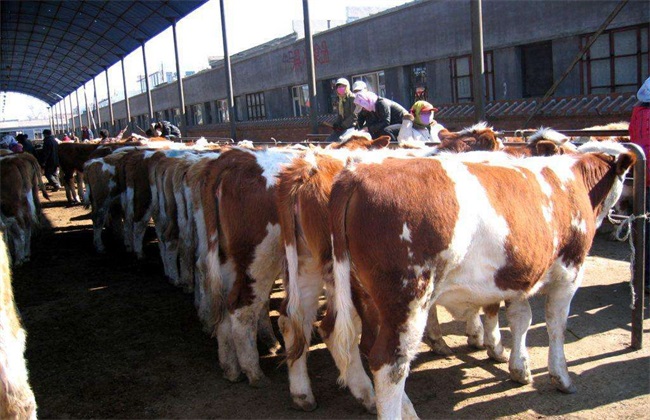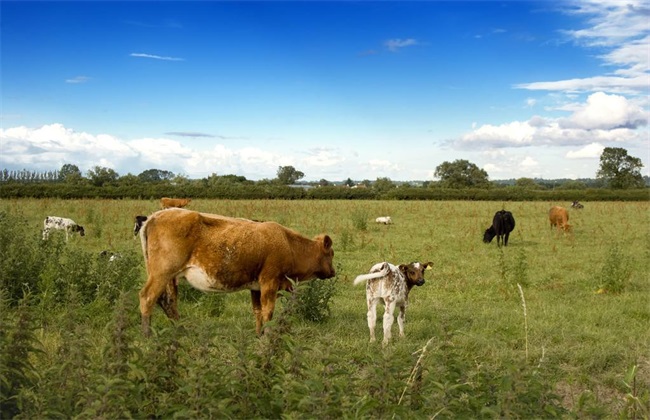Feeding and Management of breeding cattle
Mature cattle usually refer to young cattle, usually during the period from weaning to sexual maturity before mating begins. Under normal circumstances, the age of breeding cattle is generally concentrated in the period of half a year to one and a half years. The growth rate of adult cattle is the fastest, and the metabolism is the most exuberant. So how to raise and manage adult cattle? The following editor will give you a brief introduction, let's have a look!

1. Sports lighting
During the breeding period, it is very important for cattle to exercise a lot. Reasonable exercise can promote the blood circulation of breeding cattle and enhance the metabolism of cattle. It can make the cow maintain an empty stomach and improve the appetite of the breeding cattle. And exercise can also promote the development of bones, muscles and various organs of cattle, which is also very beneficial to the development of reproductive organs. Then we should also pay attention to control the light, the right amount of light is also very important for the growth of cattle. Ultraviolet rays can not only promote the synthesis of vitamin D in cattle, but also stimulate the secretion of sex hormones and ensure reproductive performance.
2. Prevent fights
When breeding cattle are fed in groups, there will be fights as the cattle get bigger and bigger. Because after about one year old, the intensive feeding should be properly restricted, so the breeding cattle often rush to eat, and the strong cattle bully the weak cattle. And with the passage of time, these phenomena will become more and more serious. Weak cattle will be stunted because they can't get enough nutrition. Therefore, when we are in group feeding, it is best to take alms connected to the fence, and each cow should be fed the same amount of feed, about twice a day.
3. Wipe the cow body
When raising and breeding cattle, we also need to wipe the cattle frequently to ensure that the cattle have a clean body. Because when raising, the cow body is easy to be contaminated by excrement, coupled with the dust is very easy to form a layer of dirt on the skin. It is very disadvantageous to the blood circulation of cattle, and it is easy to produce skin diseases and parasites. Therefore, we should pay attention to regularly wipe the cattle to ensure the normal growth of breeding cattle. When wiping, you can first rub the dirt repeatedly with straw, brush it off with a brush, and then add an appropriate amount of food oil to warm water to remove attachments from the cow.
4. Make a good record
When raising adult cattle, it is best for us to keep a good record of the growth and development of adult cattle. Through these records, we can have a full understanding of the growth of cattle, and then judge whether the current nutrition level is suitable or not according to the growth of bred cattle, and make reasonable adjustments. Recording should be carried out at birth and should be measured once a month or so, including height, oblique length and weight. At the same time, we should also record the date of estrus and make a reasonable breeding plan according to the estrus of each cow.
The above is a brief introduction to the feeding and management of bred cattle. That's all for today's introduction. This article is for reference only. I hope it can help you all.
Related
- On the eggshell is a badge full of pride. British Poultry Egg Market and Consumer observation
- British study: 72% of Britons are willing to buy native eggs raised by insects
- Guidelines for friendly egg production revised the increase of space in chicken sheds can not be forced to change feathers and lay eggs.
- Risk of delay in customs clearance Australia suspends lobster exports to China
- Pig semen-the Vector of virus Transmission (4)
- Pig semen-the Vector of virus Transmission (3)
- Five common causes of difficult control of classical swine fever in clinic and their countermeasures
- Foot-and-mouth disease is the most effective way to prevent it!
- PED is the number one killer of piglets and has to be guarded against in autumn and winter.
- What is "yellow fat pig"? Have you ever heard the pig collector talk about "yellow fat pig"?



